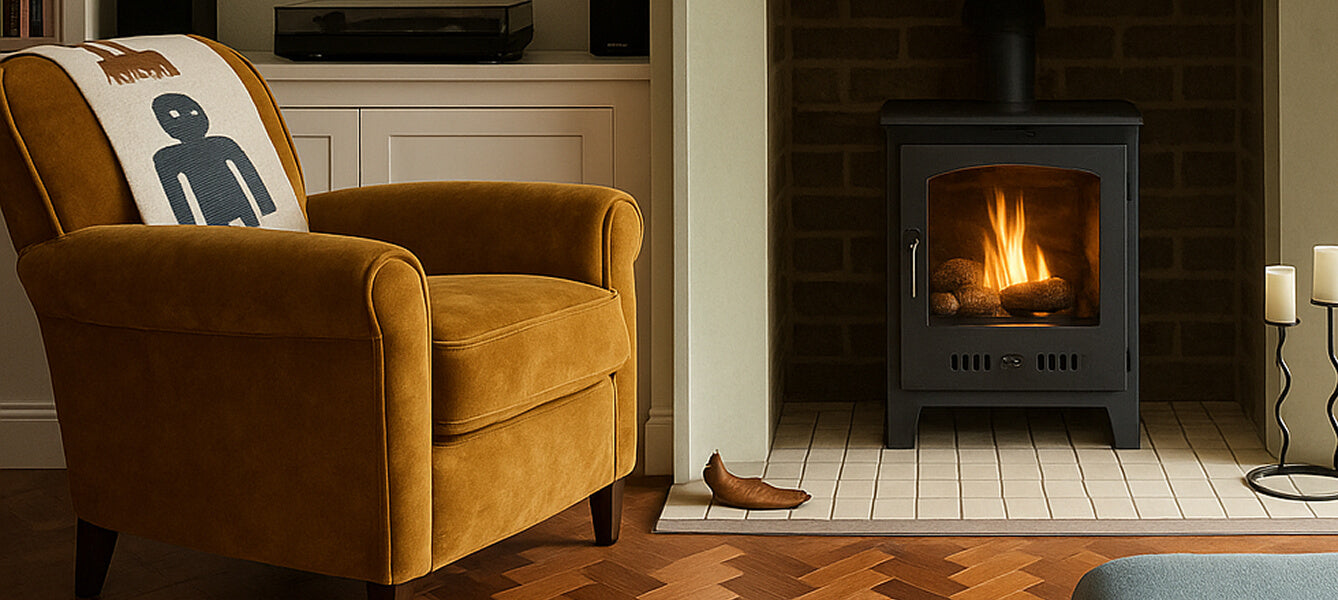Bioethanol fireplaces are extremely versatile, offering the beauty and cosiness of a real flame in rooms otherwise unable to accommodate a real fire.
The most significant USP of a biofire? You don’t need a flue or a chimney. So, bioethanol fireplaces are suitable for:
- Houses without chimneys
- Flats and Apartments
- Conservatories
- Outhouses
- Outdoor spaces, such as patios and verandas
So, if your search for an additional source of heating has so far only resulted in options of bland or uninspiring gas or electric fireplaces, you may now like to also consider bioethanol burners, (sometimes also called bioethanol fireplace, or biofires) to elevate your living space.
Why don’t I need a flue for my biofire?
Many traditional wood- and coal-burning fireplaces offer cosiness and high heat outputs, but they also create a lot of mess and pollution that affects environmental air quality.
Additionally, when burning fossil fuels, you need a fully operational chimney or flue to ensure that any toxic gases and smoke are pushed out into the air outside rather than the room inside.
However, bioethanol fuel burns cleanly, producing:
- a little water vapour (but not enough to create condensation in your room),
- carbon dioxide (around the same amount as burning two candles), and
- heat!
There are no installation costs or mess involved in burning bioethanol fuel in the correct type of fireplace. And if you feel that a flue would complete the look of your wood-burner-style biofire, include a dummy flue with your order.
You’ll receive your biofire delivered to your door — from there, all you need to do is remove the packaging and light it! Simple.
Can I hang a biofire on the wall?
Yes. We offer beautiful wall-mounted biofires that attach to most interior walls, and you don’t need special skills to hang your biofire — just use the provided kit (including screws and wallplugs) and get warm and cosy within an hour or so.
Obviously, if DIY isn’t your thing, you might want someone to help — but anyone who knows how to hang a picture will have the skills to install their wall-mounted biofire.
Just like any fire, you’ll need sufficient wall space and at least 1m clearance of flammable materials, such as fabrics, curtains, and other soft furnishings.
We always recommend using your bioethanol fireplace in a ventilated room, but clear of drafts that can blow the flame out or in random directions, causing a potential fire hazard.
Where can I put a free-standing bioethanol fireplace?
Free-standing fireplaces are often portable, meaning you can use them in practically any room of the house (although we don’t recommend bioethanol fires for small bedrooms). Just ensure that you place your fireplace in an area clear of combustible items, such as curtains and soft furnishings.
Free-standing biofires usually have a glass-fronted door containing the flame inside. However, the flame occasionally licks out of the vent at the top of the unit. So, leave 1m between the top of your fireplace and anything flammable, such as a shelf or a TV.
Does a bioethanol fireplace need a hearthstone?
No — you don’t need a hearth stone for your biofire.
Remember: your bioethanol fireplace produces a real flame, so place it on a secure floor and in a place where you can’t knock it over.
Never move (or refill) your biofire while it’s lit — always leave it to cool down before you move it (or refill it).
Like all real flames, biofires use oxygen to burn — so we recommend using your biofire in a well-ventilated room. Keep an internal door open if you don’t want to open a window.
